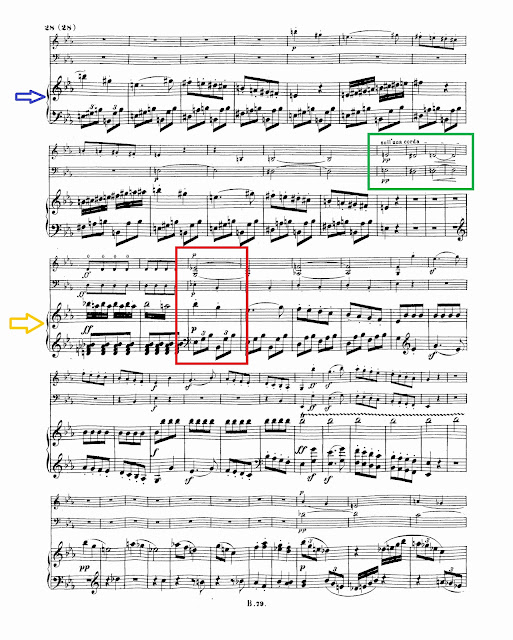CDLXIV. BEETHOVEN, Ludwig van (1770-1827)
Dedicated to his patron, Prince Lichnowsky, Beethoven actually earned some coin from this first major publication (Lichnowsky himself ordered no fewer than twenty copies!).
"Certain features stand out among many that would have impressed the first audiences. The richness of the texture, the elegance of the melodies, the seriousness of purpose, the dramatic power of the dynamic contrasts, and the urgency of the rhythmic momentum would all have tended to set Beethoven apart from his contemporaries ..." -- Barry Cooper: Beethoven, p. 57
First Movement
An ascending Mannheim Rocket!
Not until the Coda, does he reverse the motif, then returns to the ascending version to conclude the movement in firm V-I cadences:
Second movement
Moving to the subdomint (A-Flat Major), Beethoven weaves a simple Mozartian-type adagio cantabile melody into gold.
After a move to the mediant (C Major), he subtlely moves back to the tonic:
Third movement
and these violin dives are daring surprises!
The trio (in A-Flat) is calmer and short. After the repeat of the minuet, Beethoven inserts a Coda where the music ends with a lovely ritardano:
By extending the B-Flat a semitone to a C-Flat (B-Natural), he enharmonically introduces the distant key of E Major. Using just three notes (E, D-Sharp, D), the D becomes the third of the dominant -- B-Flat Seventh, which cadences to E-Flat, the home key. Very clever writing.
















No comments:
Post a Comment